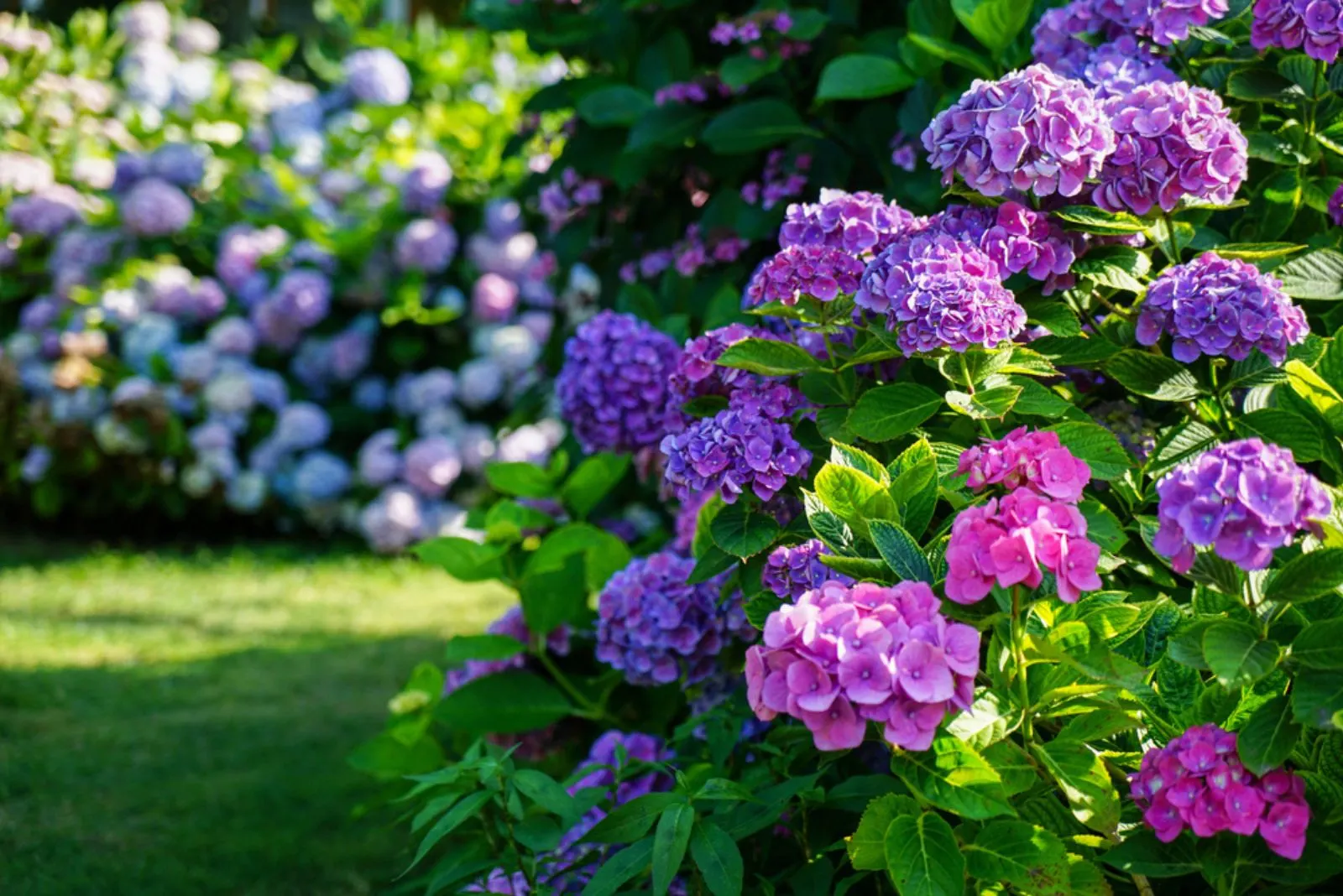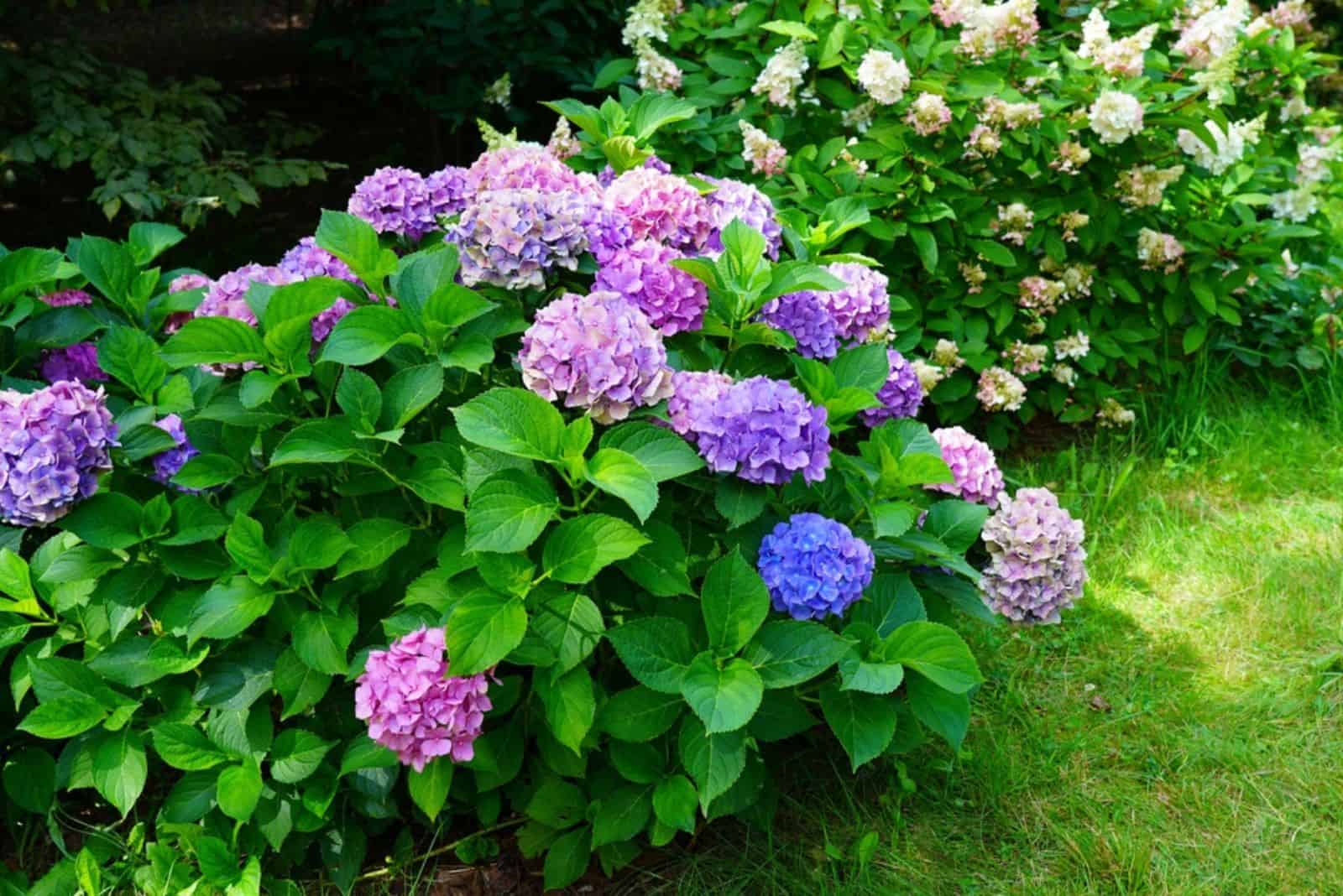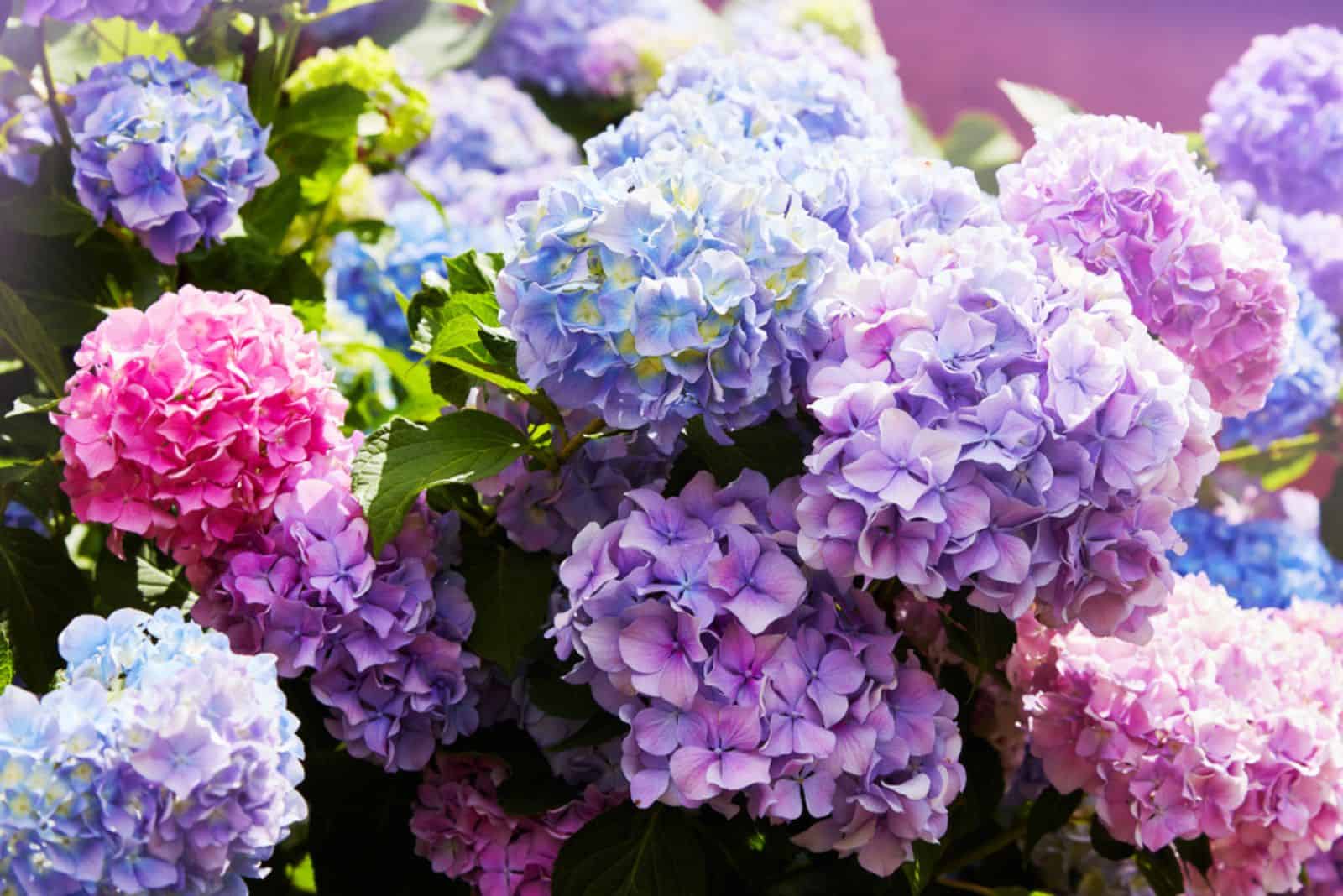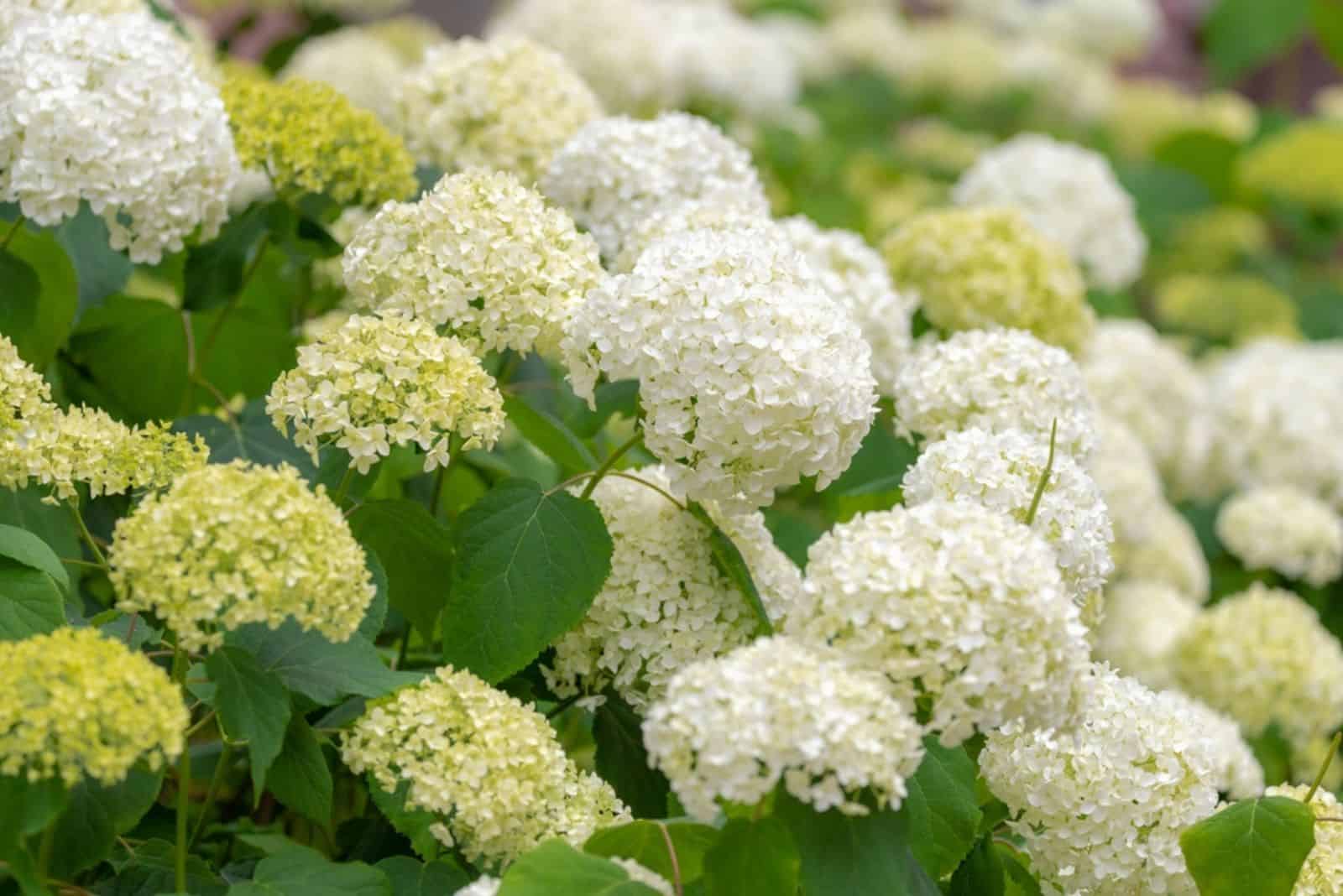Hydrangeas are a flowering plant prized for their beautiful blooms and ability to thrive in shady areas.
While these plants are generally low maintenance and require little to no additional nutrients, knowing how to properly fertilize them can take your hydrangeas to another level of beauty.
With the right plant food, you can encourage larger, more vibrant blooms that will really make your garden stand out!
No matter whether you are an experienced gardener or just starting out, these tips for fertilizing hydrangeas will help you achieve the lush, colorful garden of your dreams.
Let’s dive right in.
What Fertilizer To Use
Knowing what fertilizer to use is of the utmost importance. You can’t just throw some fertilizer around and call it a day, especially not with flowering plants. Although most flowering plants are quite delicate, hydrangeas are hardy flowers that don’t need much fertilization.
Still, this doesn’t mean that you shouldn’t give them any additional nutrients to boost their growth and flowering.
You can either use organic or inorganic fertilizer, or perhaps one specifically made for flowering plants.
Let’s discuss this in a bit more detail to help you choose which fertilizer to use.
Organic Or Inorganic Fertilizer?
Generally speaking, there are two options when it comes to fertilizers: organic or inorganic.
Organic fertilizers are made out of natural sources such as animal manure, compost, bone meal, and fish emulsion. It takes longer for these fertilizers to act because they must first be broken down by soil microorganisms before they can be taken up by plants.
Organic fertilizers are typically rich in organic matter, can improve soil structure and moisture retention capacity, and overall soil health.
On the other hand, inorganic fertilizers are made from synthetic compounds and are often referred to as chemical fertilizers. They are frequently altered to achieve the concentrations needed for quick and efficient plant growth.
Inorganic fertilizers are more effective and cost-effective, though they can have a negative impact on the environment if used in excessive amounts.
It ultimately comes down to your preferences – if you want to improve soil health and structure, use organic fertilizers. If you want to give your plants a quick boost of nutrients, then use an inorganic one. Some gardeners combine both organic and inorganic fertilizers.
Or Maybe Flower Fertilizer
There are fertilizers designed specifically for flowering plants. The most common ones include gardenias, rhododendrons, azaleas, camellias, and hydrangeas.
The NPK ratio is usually 1:3:2 – 1 part nitrogen (N), 3 parts phosphorus (P), and 2 parts potassium (K).
This is a perfect formula for encouraging large and vibrant flower production. These fertilizers are usually dissolved in water and applied every 7 to 14 days (though this might vary depending on the product).
In order to improve the quantity of buds and the size of blooms, these fertilizers are typically applied as buds are setting. From midsummer until fall, buds start to form on aged wood.
Applying more fertilizer during this period will benefit blooms the following season.
The Perfect NPK Ratio
We mentioned the NPK formula that is most commonly found in flower fertilizers. However, you can also use a balanced fertilizer.
Equal amounts of nitrogen, phosphorus, and potassium make up a balanced fertilizer. It also contains a variety of micronutrients, or trace elements, that plants need in lower amounts.
These trace elements are usually boron, iron, manganese, zinc, and others.
The NPK ratio must contain more phosphorus for larger and better blooms. As an example, a fertilizer with 10-20-10 formula contains twice as much phosphorus as nitrogen and potassium.
Still, other ingredients are just as important. While potassium strengthens stems and roots, and helps nutrients move through plants, nitrogen is necessary for leaf growth.
Choose Your Hydrangea
There are over 75 hydrangea varieties out there. However, only 6 varieties are commonly grown in gardens. They produce beautiful clusters of flowers that can make any outdoor space look dreamy.
Even though we are talking about the same plant, there might still be some differences regarding fertilization between these varieties.
Let’s take a closer look.
1. Hydrangea Anomala subsp. Petiolaris
This is a climbing hydrangea known for its beautiful white flowers and lush foliage. This climbing plant can grow up to 30-80 feet tall. It prefers partial to full shade and moist, well-draining soil.
The Hydrangea anomala subsp. Petiolaris can be grown in USDA hardiness zones 4 through 8. When it comes to fertilization, you should only give it a few feedings during the growing season. Apply some balanced 10:10:10 fertilizer in the spring and again in early summer for healthy growth and blossoms.
2. Hydrangea Paniculata
The Hydrangea paniculata, also known as the panicle hydrangea, is known for its cone-shaped, white or pink flowers that bloom in the summer. This variety is also more cold-tolerant than other hydrangea species.
It is probably one of the easiest hydrangeas that you can grow. It requires little to no fertilization, though you can use a balanced 10:10:10 fertilizer in the spring, or a high-phosphorus fertilizer to promote flower bud formation. This should be enough for the entire growing season.
3. Hydrangea Macrophylla
The Hydrangea macrophylla, also known as the Bigleaf hydrangea, is by far the most popular variety out there!
They produce pink, blue, and purple flowers. These flowers appear in late spring and early summer, with a possible second bloom in late summer. These hydrangeas also have large green leaves, hence the nickname.
The soil’s pH can predict flower color. Naturally pink flowers will become blue if there is aluminum in the soil and the pH is 5.5 or lower. You can add certain products to raise acidity and keep flowers blue (peat or pine bark will do the trick).
If you want to have more pink or purple flowers, you can add lime to the soil. You can also add specific fertilizer to maintain the color. For instance, use a high-phosphorus fertilizer to get only pink flowers.
Use a low-phosphorus and high-potassium fertilizer to enhance the blue color. Generally, these hydrangeas should be fertilized with a balanced fertilizer every six weeks during the growing season.
4. Hydrangea Quercifolia
Here is yet another shade-loving perennial plant that can make shady areas of your garden vibrant and lively. The Hydrangea quercifolia has oak-like leaves, hence the nickname Oakleaf hydrangea.
As well as these unique leaves, this variety also produces white cone-shaped flowers that bloom in the summer. As the season progresses, these white blossoms change to pink, purple, red, and orange hues.
The Hydrangea quercifolia thrives in USDA hardiness zones 5 through 9. It does best in partial shade, though it can tolerate some sun. To fertilize this plant, use a balanced slow-release fertilizer in the spring before new growth appears.
5. Hydrangea Arborescens
Wild hydrangea, Smooth hydrangea, and Sevenbark are just a few nicknames of the Hydrangea arborescens. This variety differs from others since it requires at least 4-6 hours of sunlight during the day.
The more sun it receives, the more blooms it will produce!
The most popular cultivars are “Annabelle” and “Invincibelle” because they produce prominent white flowers that look magnificent. In order to promote large, vibrant blooms, this plant requires feeding in the spring using a formula like 15:30:15, which has double the phosphorus.
6. Hydrangea Serrata
The Hydrangea serrata, otherwise known as the Mountain hydrangea, is native to Japan and Korea. This variety prefers warmer environments. It is known for its delicate, lacecap flowers that bloom in shades of pink, blue, and purple.
In alkaline soils, the blooms will be pinker, and in acidic soils, they will be bluer. They could also be white or any shade in between.
The best fertilizer for this variety would be a slow-release fertilizer with high-phosphorus content. It should be applied early in spring.
I hope you enjoyed reading this article.
Until next time!





